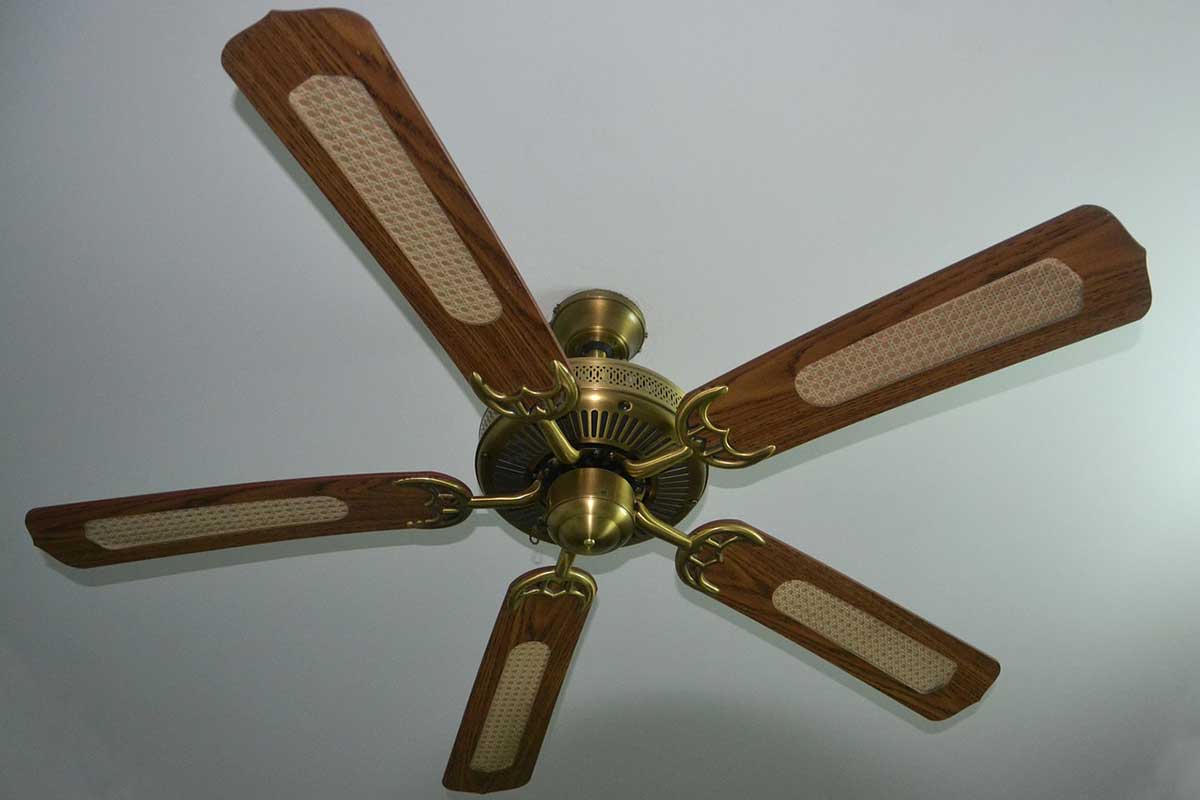This page may contain affiliate links. If you click and buy, we might get a small commission at no cost to you.
Ceiling fans are a great way to create air circulation in your room. However, after a few years, you may find the blades are imbalanced or drooping. Why do ceiling fan blades droop? And how can you fix the problem? Read on to learn about the common issues with your ceiling fan and how you can adjust the blades.
Key takeaways
- Loose screws, exposure to humidity, or defected construction can cause ceiling fan blades to droop
- You can adjust loose screws but be careful not to make it too tight
- Leveling your ceiling fan with a fan balancing kit can also prevent drooping or wobbling
Why do ceiling fan blades droop?
A typical reason why ceiling fan blades droop is that the screws have become loose. Ceiling fans are held together with a set of screws – i.e. three screws per blade. If tightening the screws doesn’t fix the problem, you might have a flaw in the construction material or manufacturing process. For instance, your fan blades may be broken or your fan’s motor has issues.
Ceiling fans will also droop if the material the fan blades are made of are not meant for withstanding changes in humidity over time. For example, if you have an indoor fan with wood components placed in a damp, outdoor location like a screen porch. When moisture collects in certain areas the blades can sag and you will need to purchase a different fan or replace the fan blades.
Why do ceiling fan blades wobble?
Loose screws on your fan blade can cause your ceiling fan to droop or wobble when turned on. This can be dangerous, especially if the blades come apart. However, there can also be a different reason your fan is wobbling or making weird nosies. Other reasons that can be impacting your ceiling fan include:
- Imbalances in the blade holders or fan blades
- Misalignment of fan blades
- Excess accumulation of dust
- Loose ceiling fan mounting
What kind of fan is best for outdoors?
Ceiling fans with materials, such as wood, that aren’t ideal for outdoor, damp, or humid conditions can cause your blades to droop. For outdoor installation, you need to replace your fan with a model that has UL approval for outdoor conditions. The Underwriters Laboratories (UL) certification includes listings for damp locations where rain cannot reach it or wet locations where rain may blow onto it occasionally.
Can ceiling fan blades be adjusted?
Yes they can. Adjusting the screws on your ceiling fan can solve your drooping problem. You can also use a fan balancing kit to straighten out the blades. However, any obvious damage or cracks to the blade means you should replace the blade instead of trying to adjust the screws.
Here are the steps to adjusting your ceiling fan:
- Turn off the fan and wait for the blades to stop rotating
- Use a ladder or step stool to reach the fan
- Tighten each screw on the blades and fan motor by turning it clockwise with a screwdriver
- Replace any faulty screws that will turn but still remain loose
- Turn on the ceiling fan to observe changes
How tight should fan blades be?
While making sure the screws on your fan blade are as tight as possible may sound like a good idea, it’s not. Fastening screws too tightly will cause the screw to strip and become faulty. You want it tight enough to be secure but don’t keep turning it clockwise and overdo it. The fan should have blades that are all equal distance from the ceiling.
How do you level a ceiling fan?
A fan balancing kit is a great tool to identify faulty blades and help level your ceiling fan to prevent any wobbles or drooping. The kit comes with weights with self-adhesives to attach to the fan blades and level it out. Use the kit by:
- Turning off the ceiling fan
- Clip a weight from the fan balancing kit near the middle of one fan blade
- Turn the fan on high to see if it rotates levelly and evenly
- Turn the fan off
- Move the weight from blade to blade until the blades are level and the fan balances
- Stick the fan weight to the blade that the clip-on weight balanced
- Sometimes you may need multiple weights per blade
Conclusion
There are various reasons why ceiling fan blades can droop with the main ones being loose screws or exposure to humidity. You can easily tighten screws or balance your fan blades with a balancing kit. However, sometimes the issue requires replacing the fan blades completely or purchasing a fan with materials that can withstand changing climates.



